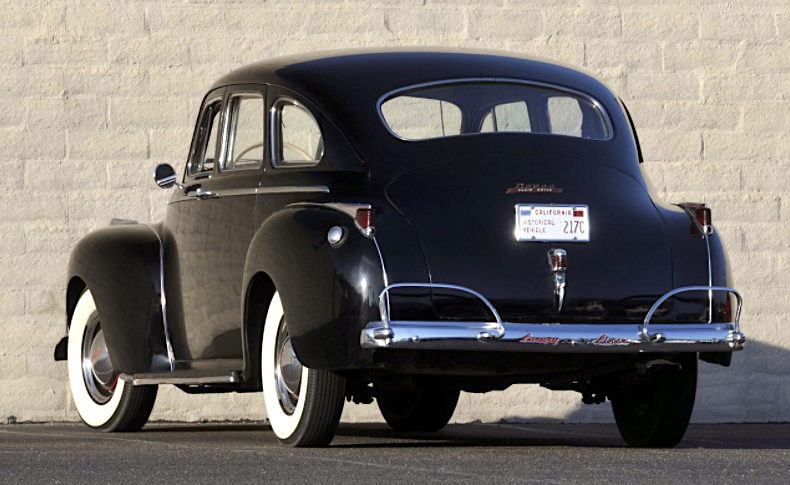This milestone was the elimination of awkwardness. Body components were now largely integrated and overall shapes were rounded as a gesture (as well as a little reality) toward aerodynamic efficiency -- "streamlining" was the catchword of the day. But the key 1941 distinction was that shapes and details, including ornamentation, were in synch. Some brands attained this before 1941, and by that year almost all brands had followed into line.
This post features what I'm calling a "typical" 1941 brand: Chrysler Corporation's Dodge. Why Dodge? For one thing it was a lower-middle market level brand -- not an inexpensive entry-level car, nor a high-priced fancy one, inaccessible to an average car buyer. It was not a product of a minor firm that might have lacked product development funds, especially as the Great Depression was finally ending: it was essentially state-of-the-art from an engineering standpoint. It was not a Ford product, Fords being industry engineering laggards in many respects. Nor was it a General Motors brand, GM being the style leader. So Dodges represent a kind of happy medium. Chrysler Corporation was engineering-dominated and prosperous. Dodge styling was in line with current fashions.
Below are photos of '41 Dodges up for sale. The black six-window car is a Dodge Custom Town Sedan that was offered for auction by Mecum. The two-tone four-window Dodge Luxury Liner 4-door sedan was offered for sale by Specialty Sales. Click on the images to enlarge.
The Dodge Custom Town Sedan. Fenders were still somewhat separate items in 1941, yet more far more integrated than those of cars of a decade before due to the high, wide catwalk between the wheels and the hood. Some Dodges still had exposed running boards, unlike many other '41s. The grille design was in the newly fashionable horizontal mode, headlights had moved to the edges of the front fenders. This body was introduced across the Chrysler line for 1940.
In those days, stylists usually paid little attention cars' rear ends, so these tended to be rather plain, as seen here. Chrysler Corporation cars featured a brake light positioned on the trunk lid above the license plate. Back windows were given curved glass, the rest had flat glass -- common 1941 practice.
Sides views showing open and shut doors. Six-window Chrysler products had latches fitted to B-pillars, so back-seat doors were hinged at the rear. Note the position of the steering wheel and its column.
The driver's compartment. Not really seen is the bench-style front seat common on American cars through the 1950s. Fabric covering on doors and the seat is typical for 1941 -- fine, fuzzy texture and bland colors.
The instrument panel has a somewhat symmetrical layout in that the instruments on the left could in theory (and in practice, for all I know) be swapped with the clock and glove box on the right when exported to countries with right-hand drive. The center has the radio speaker and those buttons to its left are for station selection. This car's steering wheel ensemble contains a horn ring; my father's '41 Pontiac's horn was activated by small buttons on steering wheel spokes. Note the steering wheel column-mounted gear selector, a fashionable feature. It eliminated a floor-mounted shift that interfered with a passenger seated in the middle of the bench; the idea was to claim six-passenger seating as a marketing feature. The disadvantage of column shifts was that connections were wobbly, not as precise as floor-mounted versions.
The Dodge Luxury Liner. Its rear doors are hinged on the B-pillars, a safer arrangement. This model has a fancier interior than that of the Custom Town Sedan. The running board is partly sheathed.
View of the 1941 Dodge grille.
The four instruments at the left next to the partly hidden speedometer are for fuel level, water temperature, oil pressure, and battery -- not necessarily in that order. The fabrics on the seats and door panels are more richly textured and colorful than usual for 1941.
The rear passenger compartment is also fancy from a fabric standpoint. On the other hand, those grab straps were common then, as were the robe cord and ash tray mounded on the back of the front seat. There should be a window crank on the door, but it seems to be missing.
The trunk is typical for '41. The vertical spare tire placement allows access with lesser disturbance of carried items than would be the case for a spare being hidden under the floor. This also potentially freed up space for the gas tank.











No comments:
Post a Comment